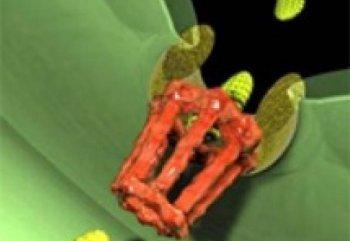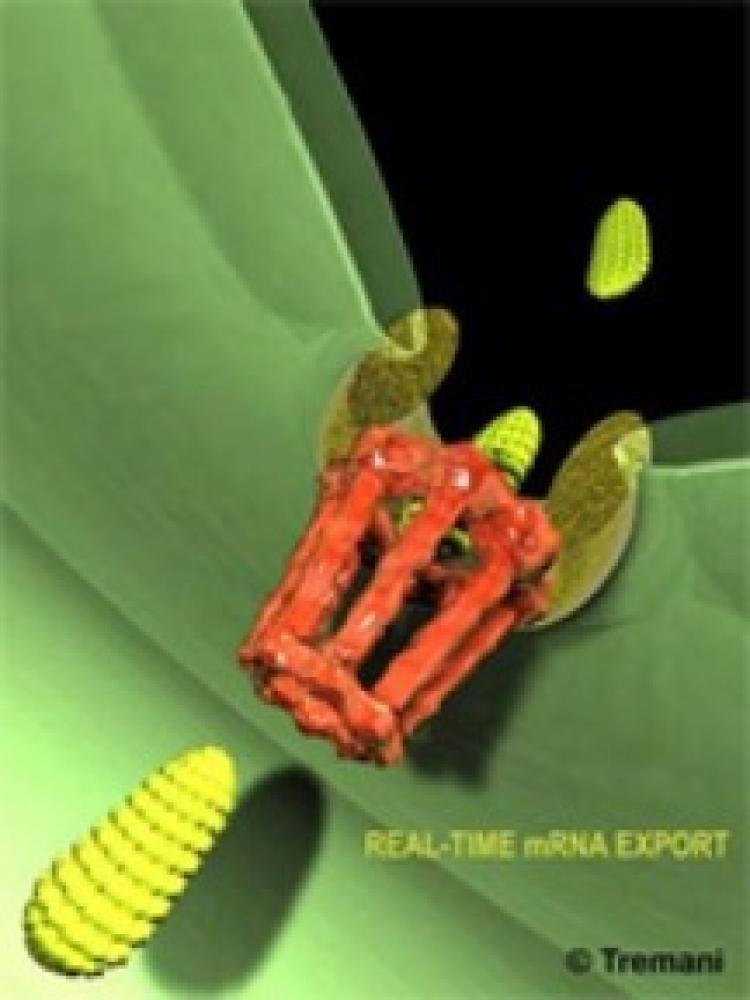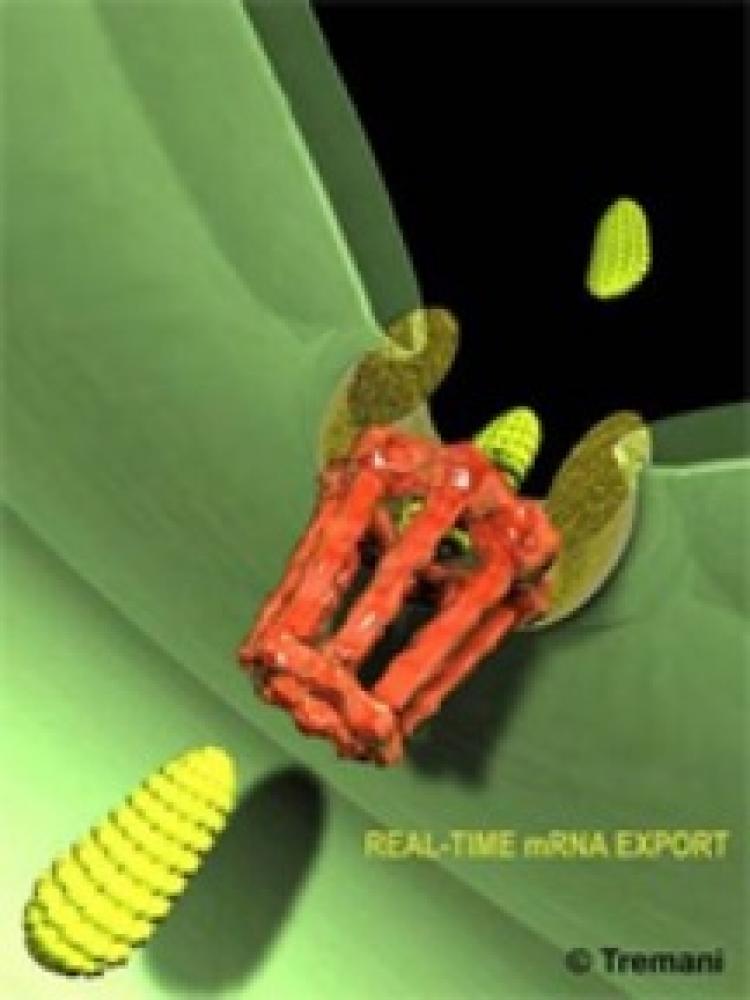Scientists have been able to see one of the most important processes in biology happening before their eyes after increasing the resolution limit of microscopy by 10 times.
Researchers from the Albert Einstein College of Medicine at Yeshiva University in New York and Delft University of Technology in the Netherlands were surprised to see messenger RNA molecules—the carriers of genetic information that codes for proteins—zip through pores in the nuclei of cells.
“Up until now, we’d really had no idea how messenger RNA travels through nuclear pores,” said lead author Dr. Robert Singer in a press release.
“Researchers intuitively thought that the squeezing of these molecules through a narrow channel such as the nuclear pore would be the slow part of the translocation process.
“But to our surprise, we observed that messenger RNA molecules pass rapidly through the nuclear pores, and that the slow events were docking on the nuclear side and then waiting for release into the cytoplasm.”
The previous size limit that a microscope could resolve was 200 nanometers (millionths of a centimeter, which is about 0.4 inches). In this study, published online in the journal Nature, the researchers developed a new type of microscope that is able to distinguish molecules only 20 nanometers apart.
After tagging messenger RNA molecules with a yellow fluorescent protein and the nuclear pore with a red fluorescent protein, the researchers used sensitive, high-speed cameras to film messenger RNA molecules traveling across the pores.
Messenger RNA molecules were seen to wait at the pores for 80 milliseconds (thousandths of a second), pass through in just 5 milliseconds, and then wait on the other side for 80 milliseconds.
Interestingly, the researchers observed that 10 percent of messenger RNA molecules waited for several seconds for entry to the pores. They suggest that this might be some sort of screening process to weed out defective molecules.
“Researchers have speculated that messenger RNA molecules that are defective in some way, perhaps because the genes they’re derived from are mutated, may be inspected and destroyed before getting into the cytoplasm or a short time later, and the question has been, ‘Where might that surveillance be happening?’” said Dr. Singer.
“So we’re wondering if those messenger RNA molecules that couldn’t get through the nuclear pores were subjected to a quality control mechanism that didn’t give them a clean bill of health for entry.”
To view a video of Dr. Singer talking about the study please visit: https://www.einstein.yu.edu/video/?VID=219&ts=sciencetalk&tsa=tabs-2#top
Researchers from the Albert Einstein College of Medicine at Yeshiva University in New York and Delft University of Technology in the Netherlands were surprised to see messenger RNA molecules—the carriers of genetic information that codes for proteins—zip through pores in the nuclei of cells.
“Up until now, we’d really had no idea how messenger RNA travels through nuclear pores,” said lead author Dr. Robert Singer in a press release.
“Researchers intuitively thought that the squeezing of these molecules through a narrow channel such as the nuclear pore would be the slow part of the translocation process.
“But to our surprise, we observed that messenger RNA molecules pass rapidly through the nuclear pores, and that the slow events were docking on the nuclear side and then waiting for release into the cytoplasm.”
The previous size limit that a microscope could resolve was 200 nanometers (millionths of a centimeter, which is about 0.4 inches). In this study, published online in the journal Nature, the researchers developed a new type of microscope that is able to distinguish molecules only 20 nanometers apart.
After tagging messenger RNA molecules with a yellow fluorescent protein and the nuclear pore with a red fluorescent protein, the researchers used sensitive, high-speed cameras to film messenger RNA molecules traveling across the pores.
Messenger RNA molecules were seen to wait at the pores for 80 milliseconds (thousandths of a second), pass through in just 5 milliseconds, and then wait on the other side for 80 milliseconds.
Interestingly, the researchers observed that 10 percent of messenger RNA molecules waited for several seconds for entry to the pores. They suggest that this might be some sort of screening process to weed out defective molecules.
“Researchers have speculated that messenger RNA molecules that are defective in some way, perhaps because the genes they’re derived from are mutated, may be inspected and destroyed before getting into the cytoplasm or a short time later, and the question has been, ‘Where might that surveillance be happening?’” said Dr. Singer.
“So we’re wondering if those messenger RNA molecules that couldn’t get through the nuclear pores were subjected to a quality control mechanism that didn’t give them a clean bill of health for entry.”
To view a video of Dr. Singer talking about the study please visit: https://www.einstein.yu.edu/video/?VID=219&ts=sciencetalk&tsa=tabs-2#top





